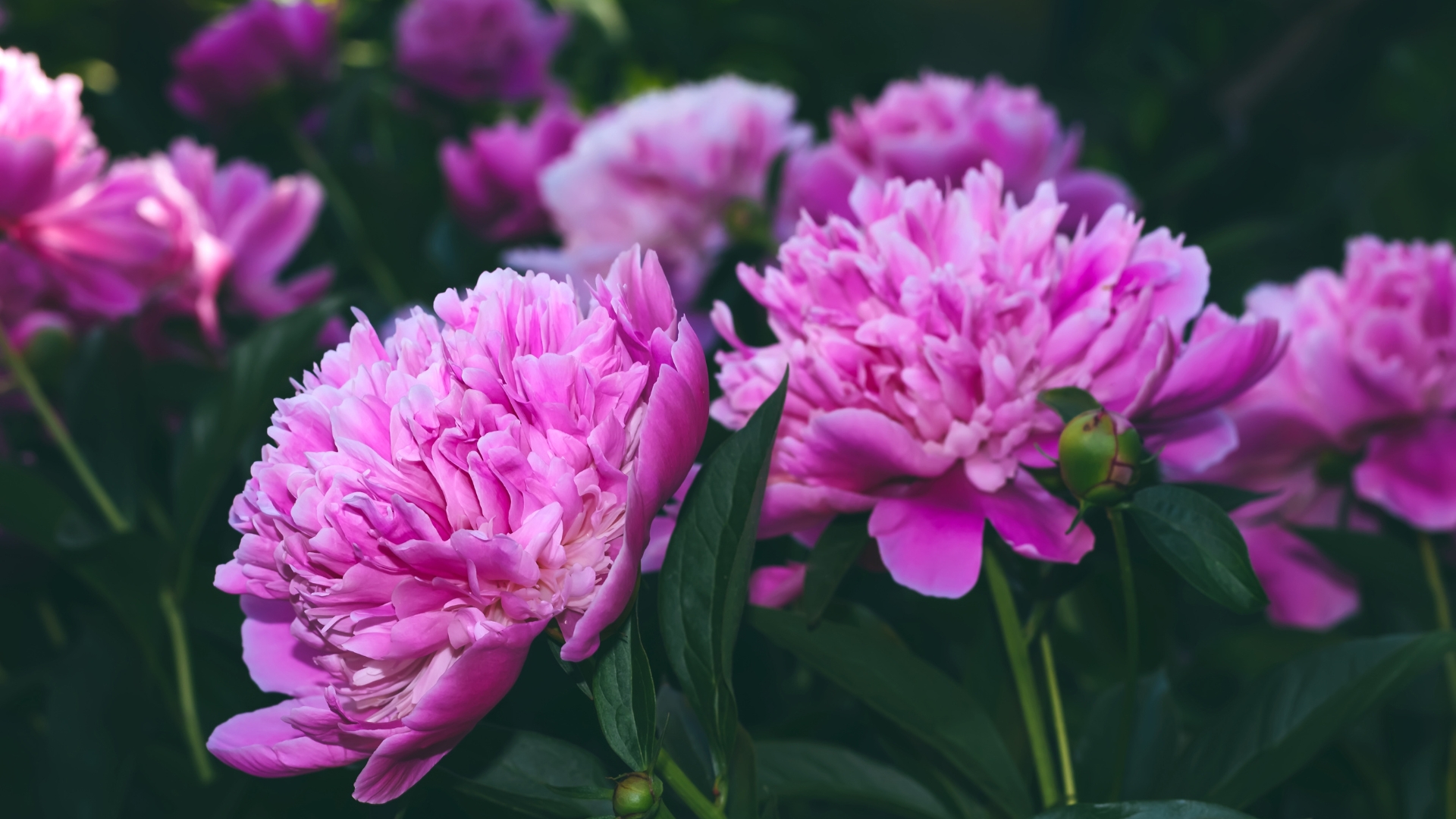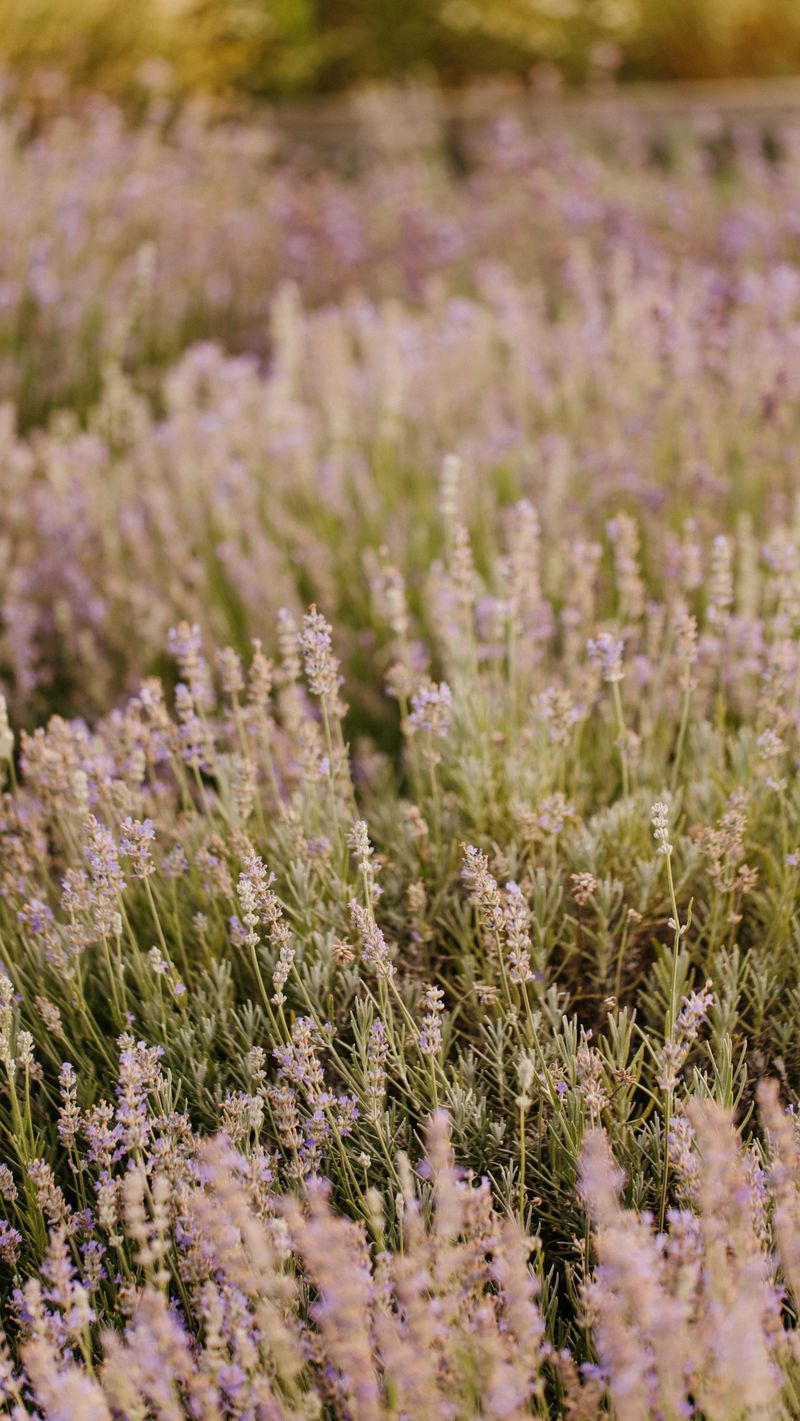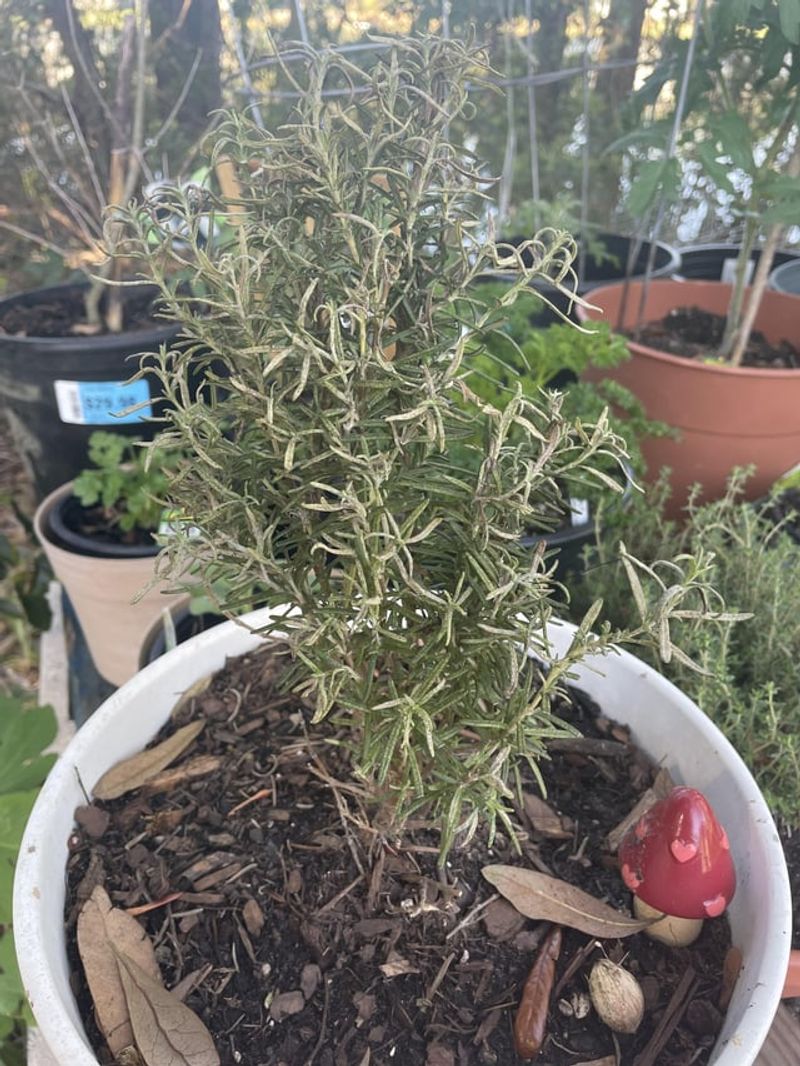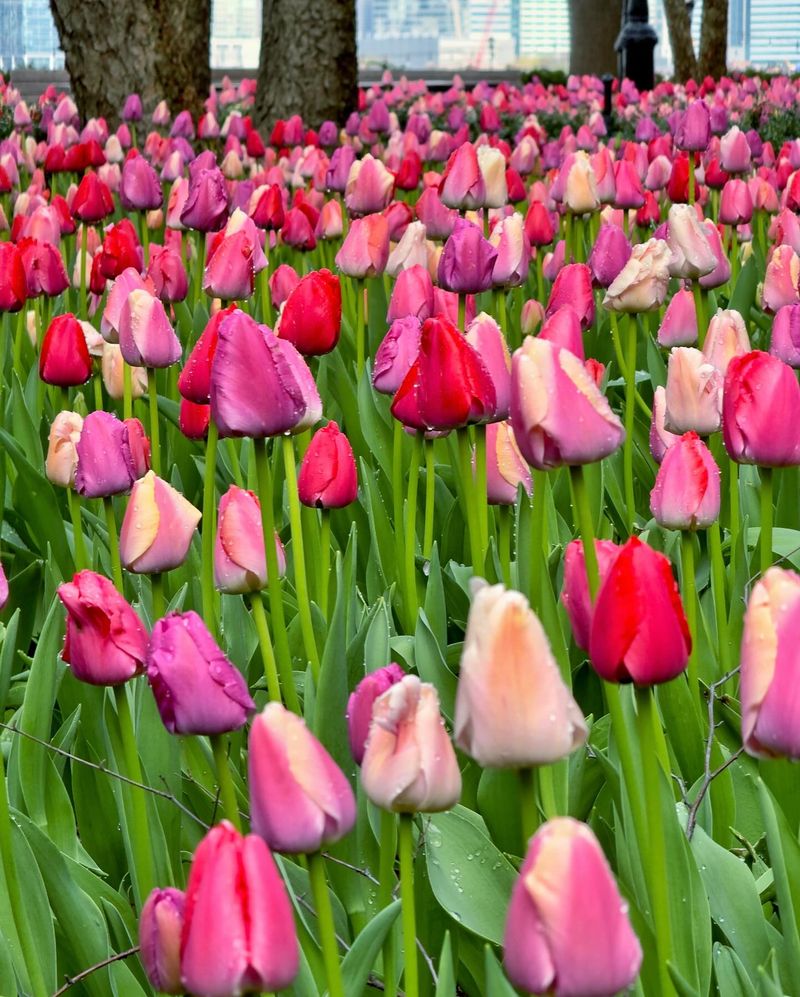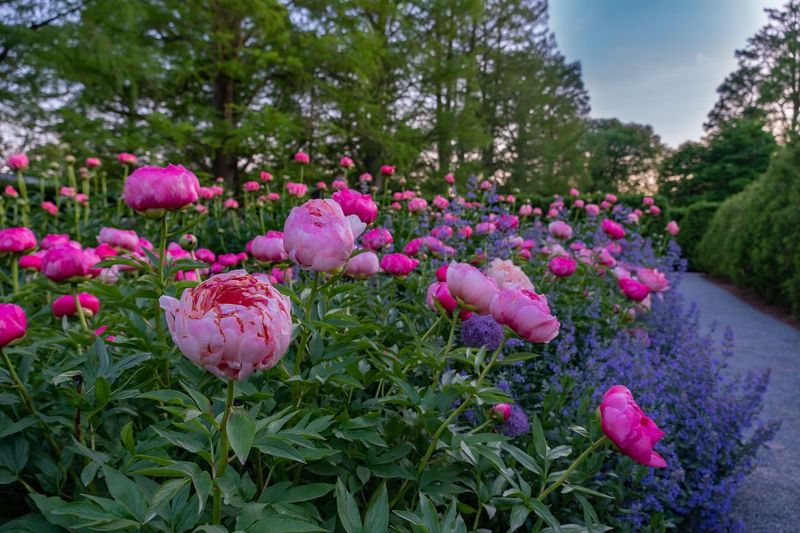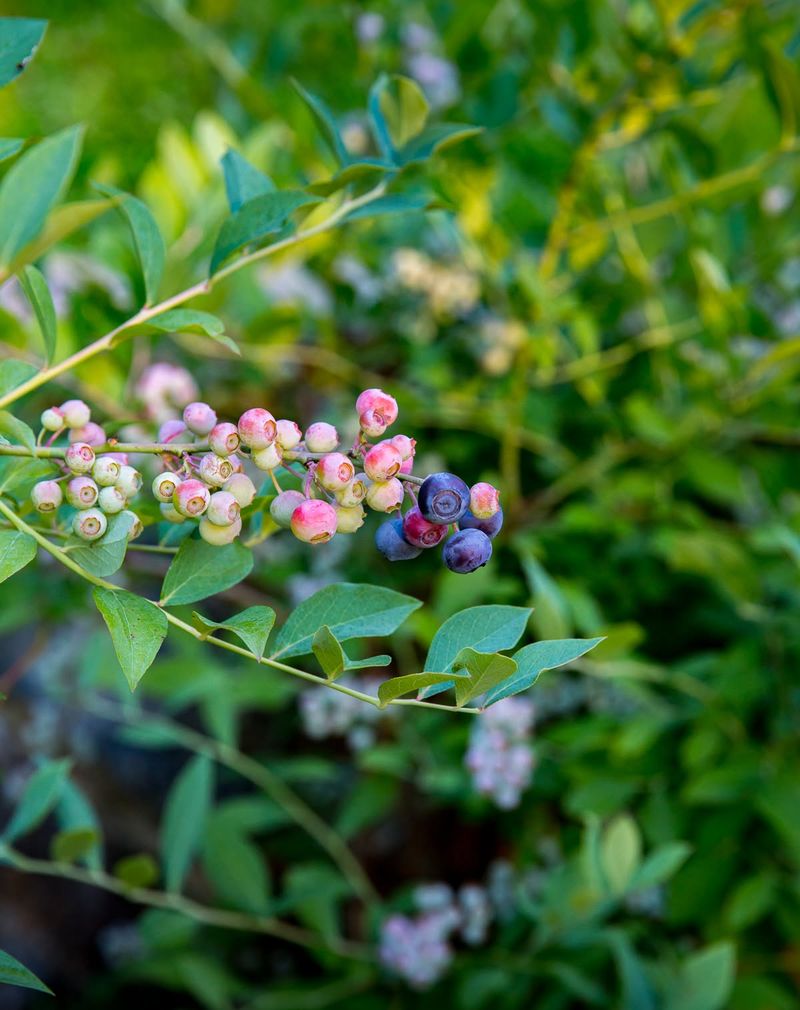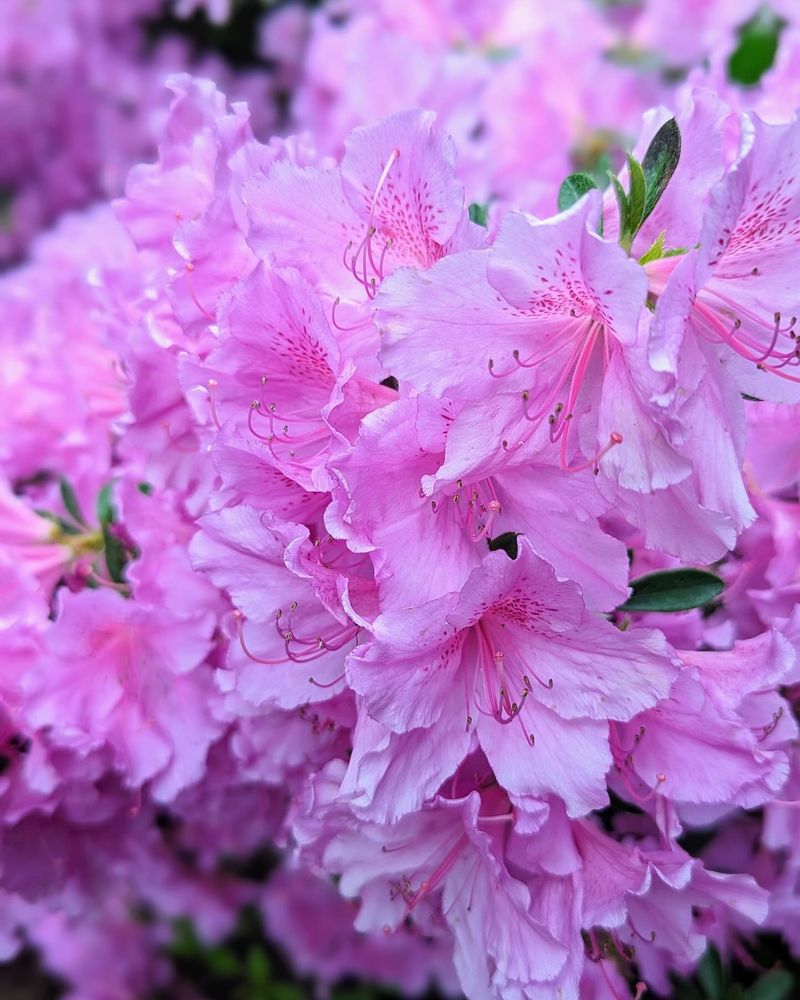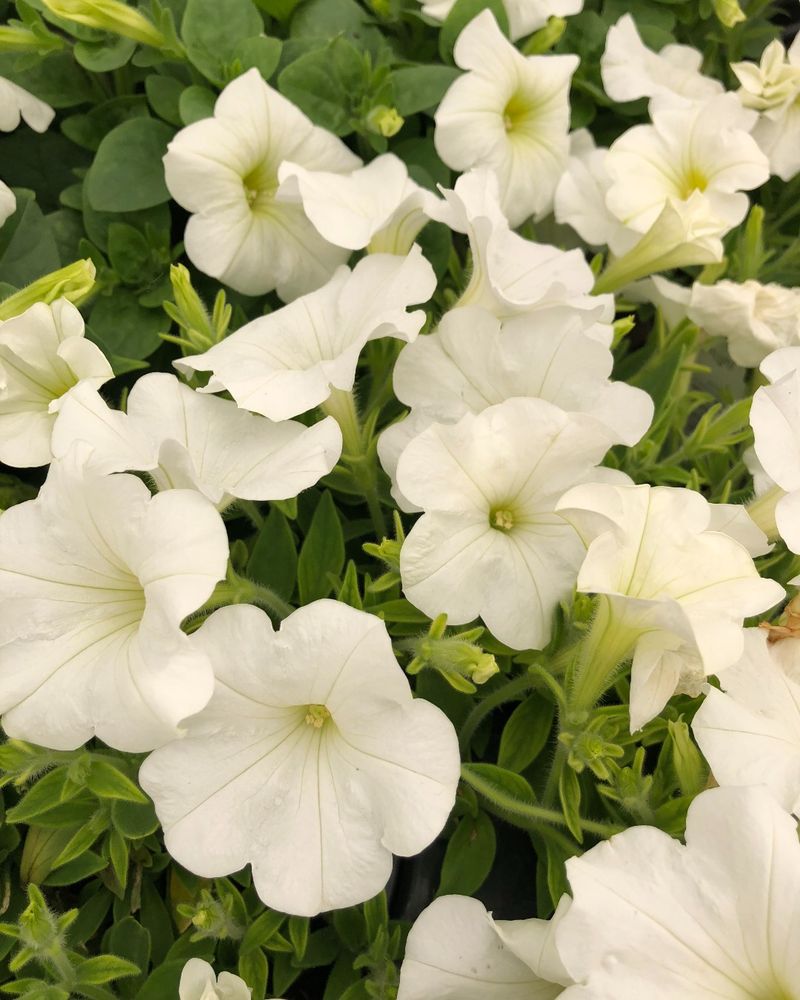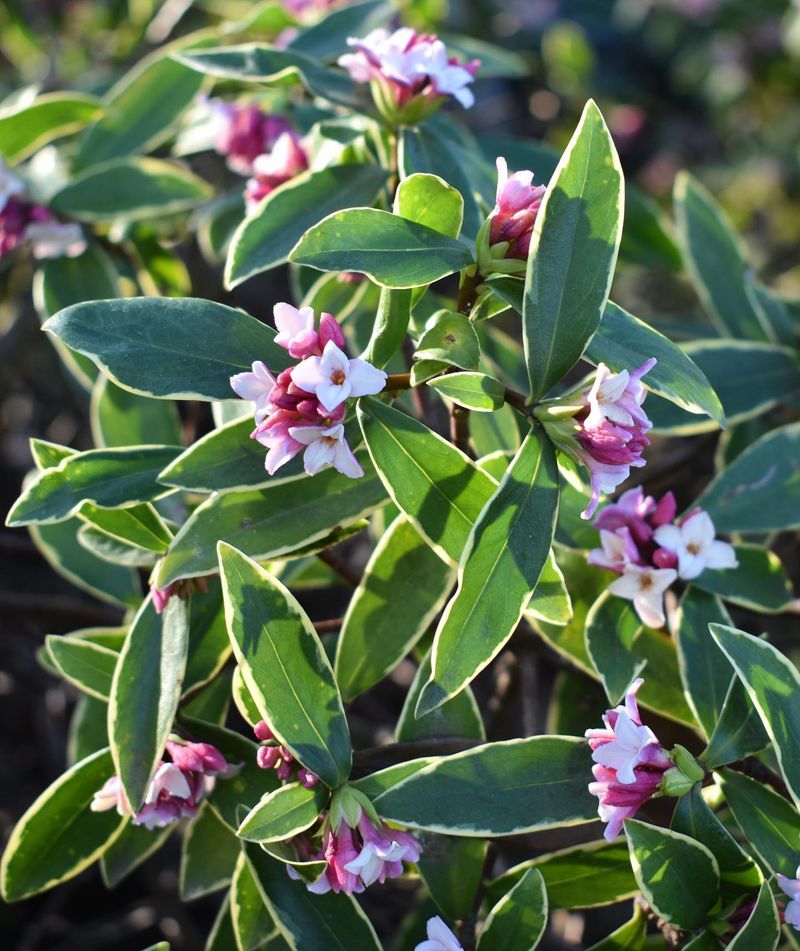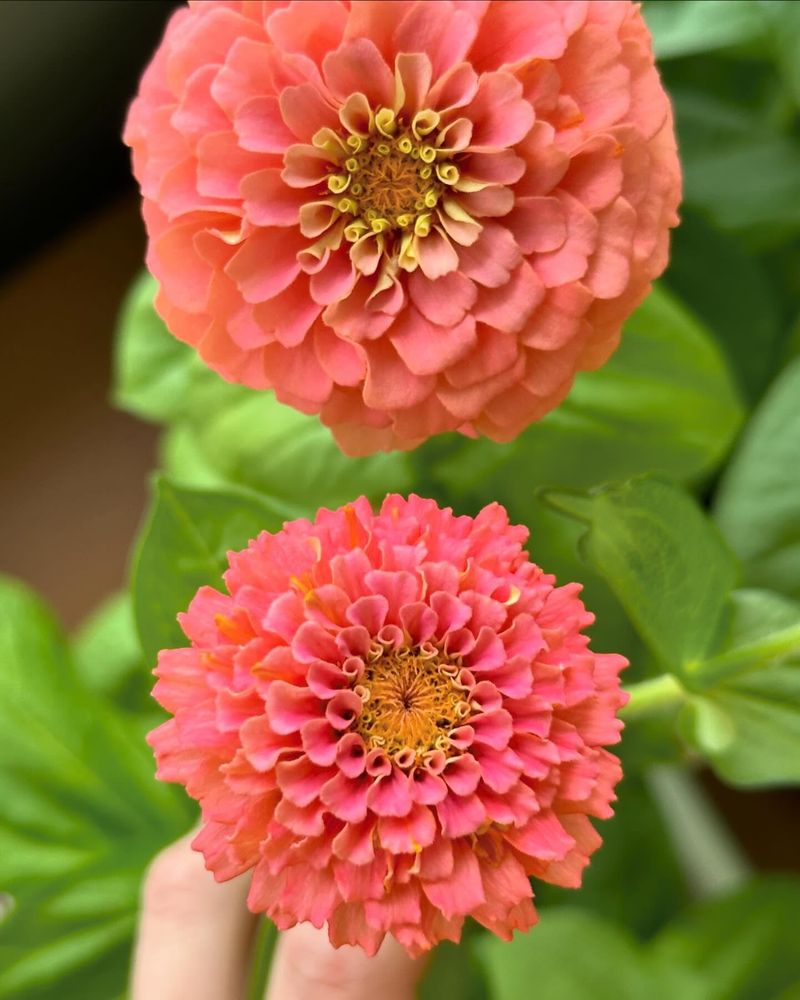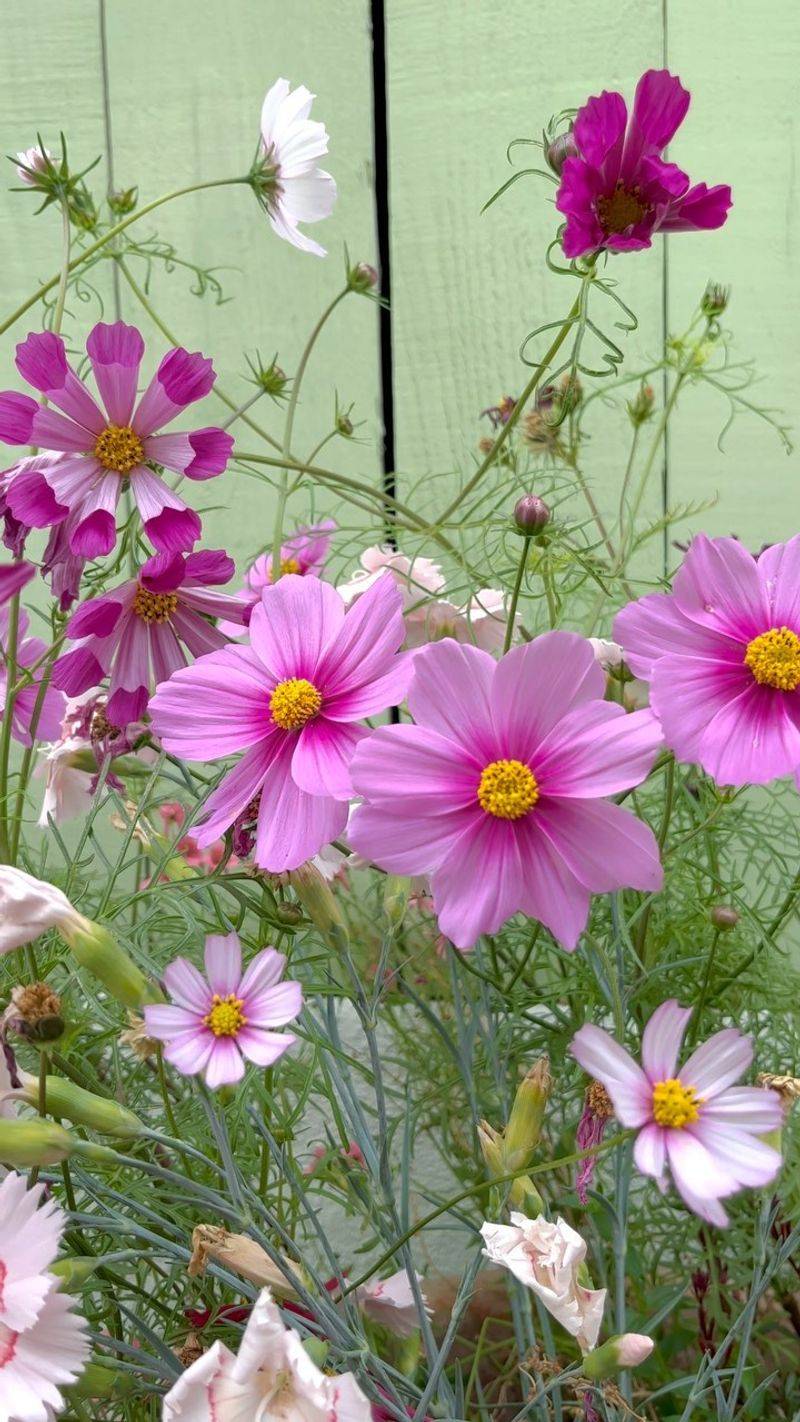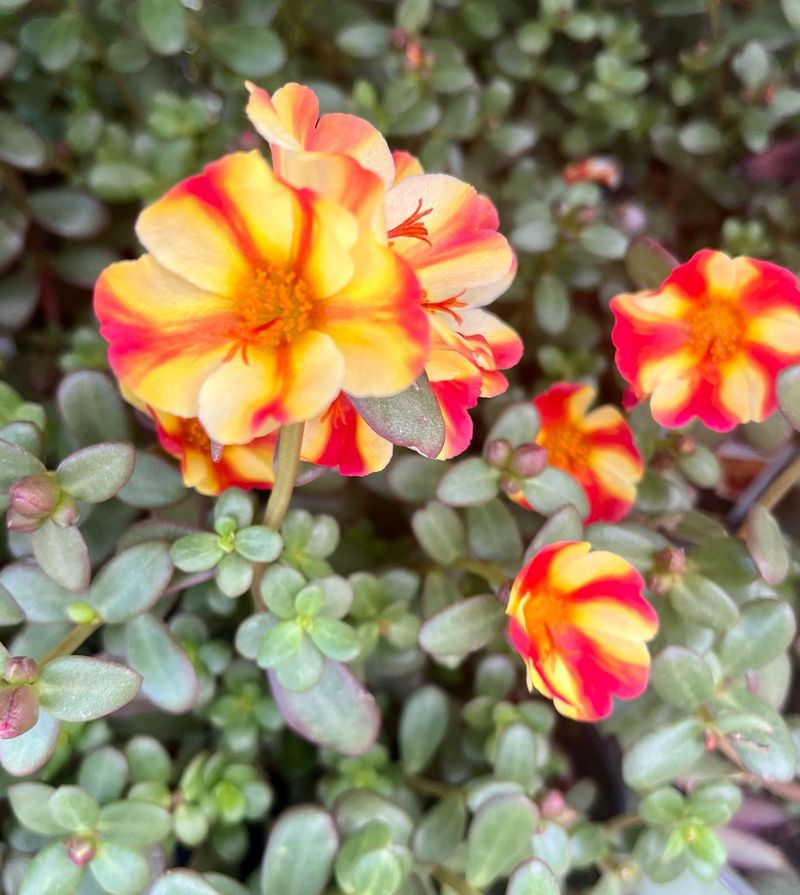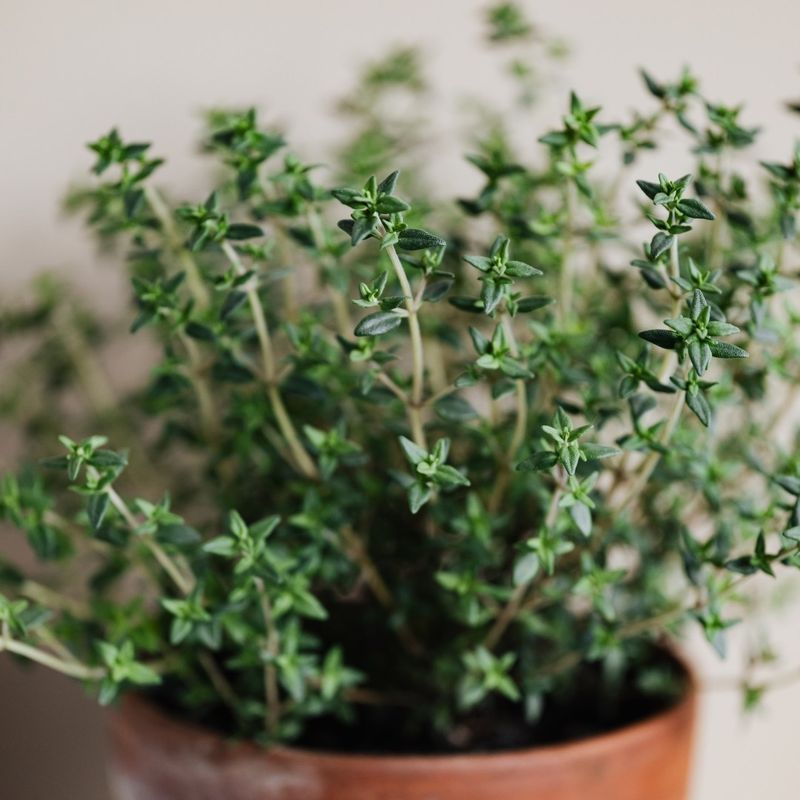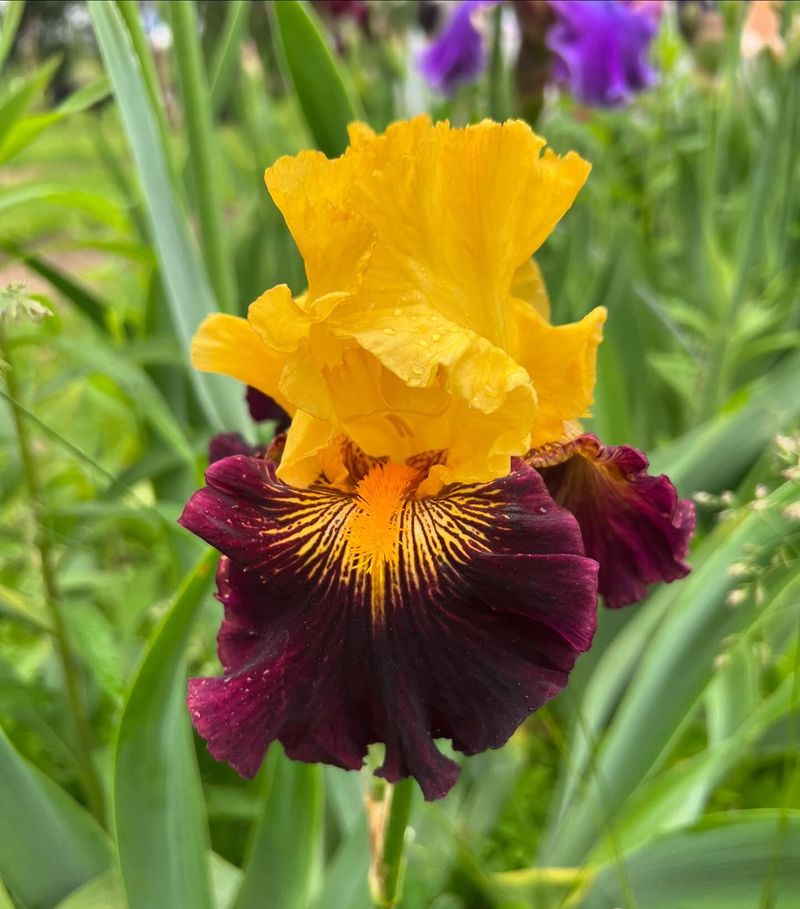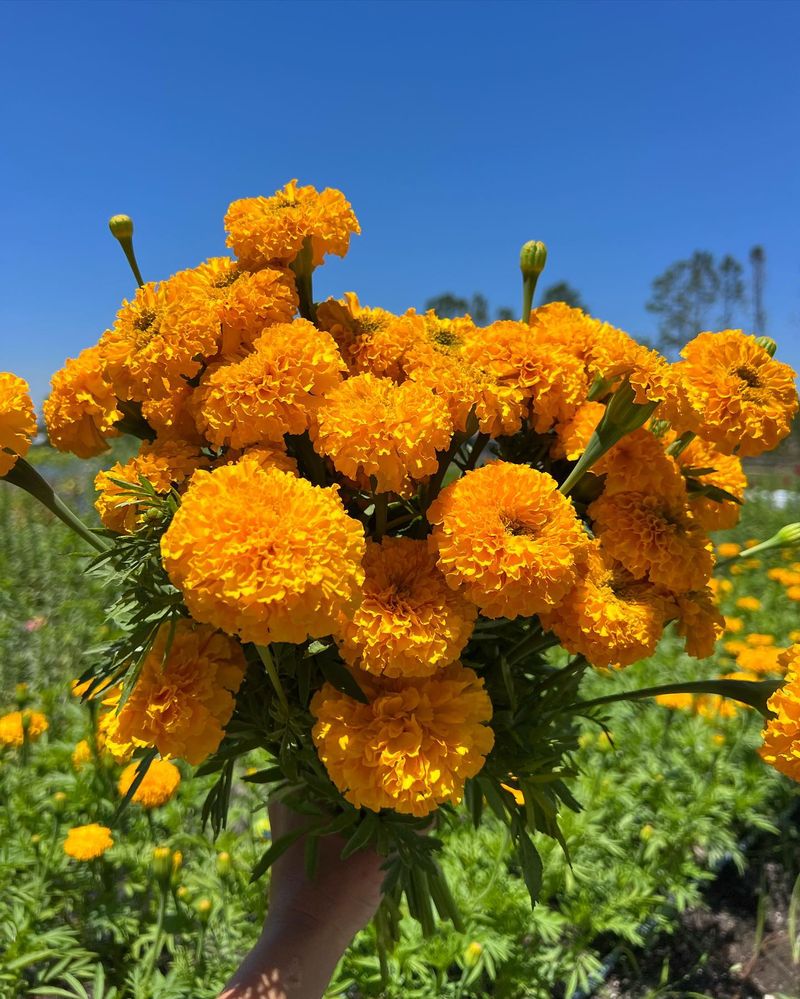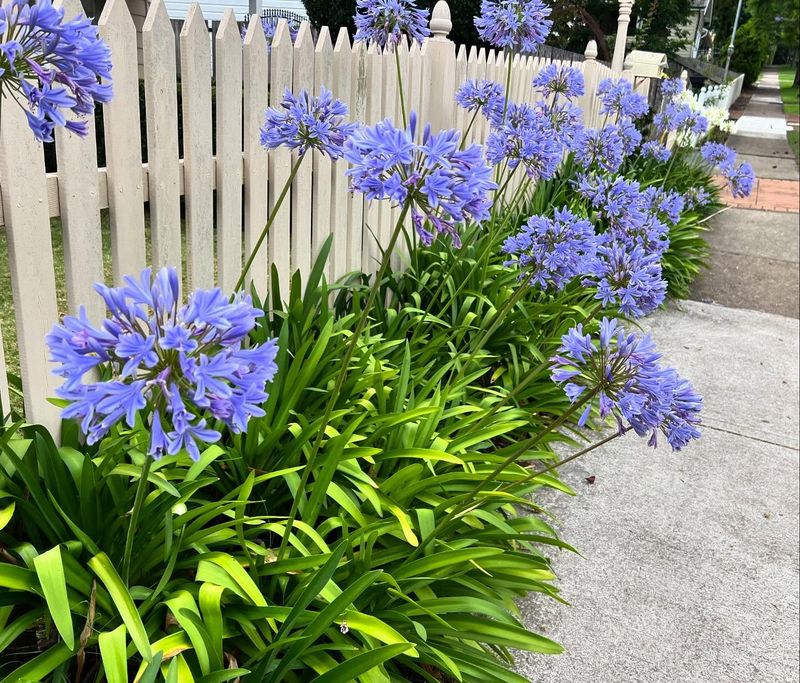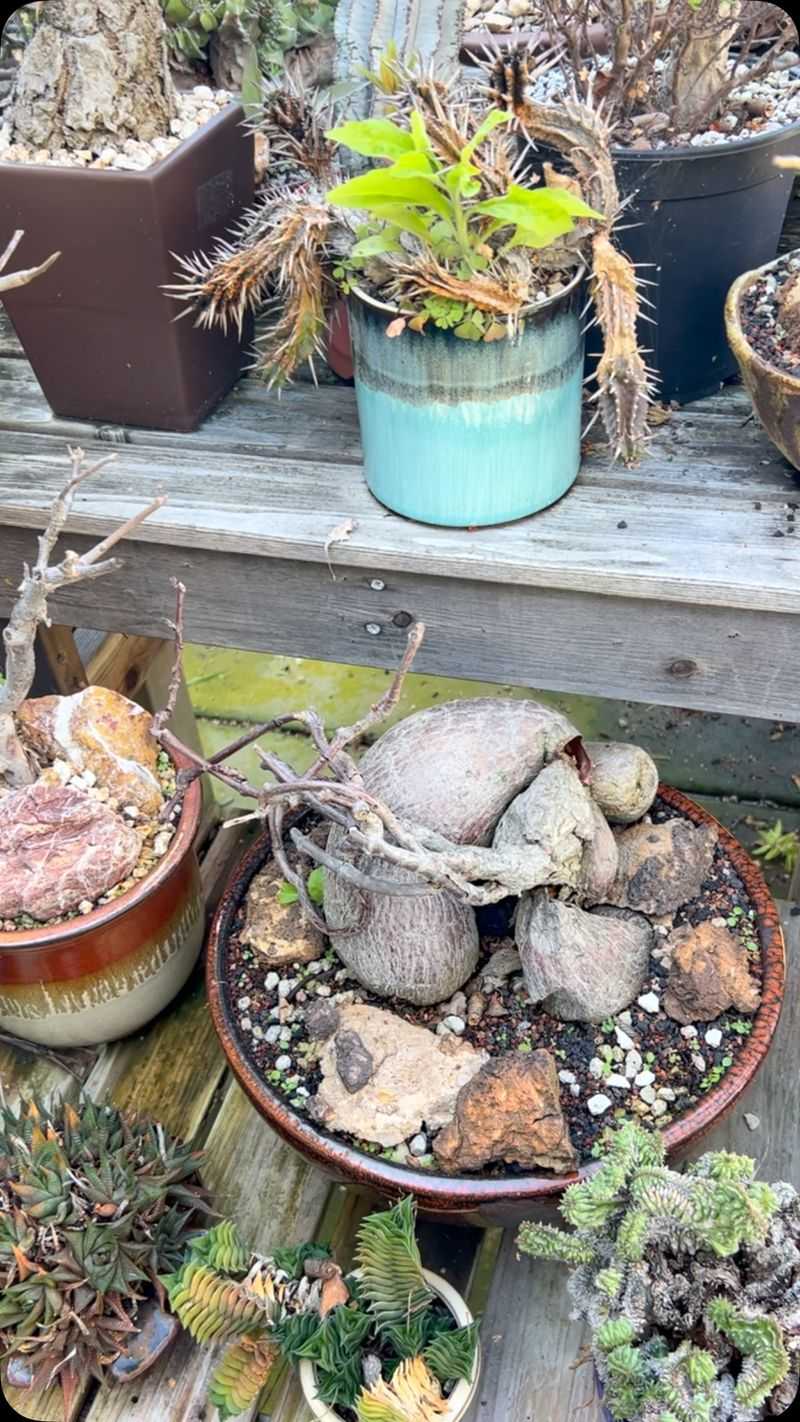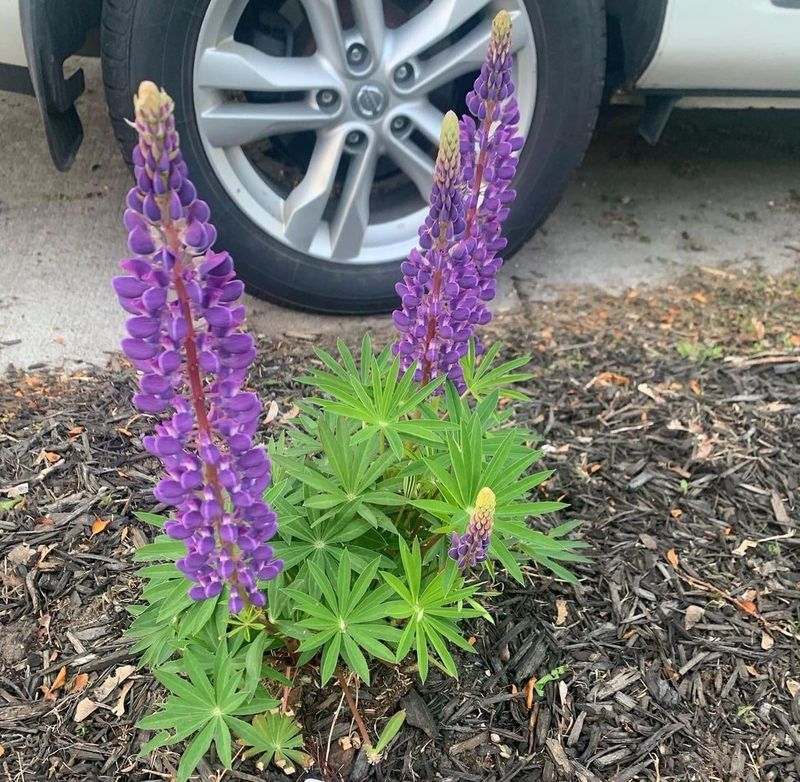Clay soil can be a real headache—I’ve wrestled with it for years, and not every plant is up for the challenge. Some just sit there, struggle, and eventually give up no matter how much love you give them.
I’ve wasted way too much time and energy on plants that had no chance. If your soil feels like bricks after rain, I know the struggle. Here are the ones I’ve ditched (and why you might want to skip them too)!
1. Lavender
Mediterranean charm doesn’t translate well to heavy soil environments. Lavender plants absolutely hate having their roots constantly wet, making clay soil their worst nightmare. The poor drainage creates conditions where root rot becomes almost inevitable.
Native to dry, rocky hillsides, these fragrant beauties demand excellent drainage and will quickly sulk, decline, and eventually die when planted in clay.
Even adding amendments won’t help much – lavender simply prefers life on the drier side with quick-draining, sandy or gravelly soil.
2. Rosemary
Aromatic and beloved in kitchens worldwide, rosemary faces a losing battle against clay conditions. Coming from dry Mediterranean regions, this herb evolved to survive in well-drained, almost sandy soils with minimal moisture retention.
When forced to grow in clay, rosemary’s roots remain constantly damp, eventually succumbing to fungal diseases.
The plant’s woody stems begin to die back, leaves yellow, and the signature fragrance diminishes. Even established plants struggle during wet winter months when clay soil holds excessive moisture against their sensitive root systems.
3. Tulips
Gorgeous spring blooms quickly turn disappointing when planted in heavy clay. Tulip bulbs require excellent drainage to prevent rotting during dormant periods, making clay soil particularly problematic for these spring favorites.
The compacted nature of clay creates an environment where bulbs struggle to establish proper root systems. After the first season, tulips planted in clay typically decline rapidly, producing smaller blooms or failing to emerge altogether.
Water pools around the bulbs during winter and spring rains, essentially drowning these beauties before they have a chance to shine.
4. Cactus
Desert dwellers meet their demise quickly in dense clay environments. Cacti have evolved over millennia to thrive in extremely well-drained, sandy conditions where water quickly passes through their root zones after rare rainfall events.
Clay soil holds moisture like a sponge, creating conditions completely contrary to what cacti need. The persistent wetness around roots leads to rapid rot in these succulents.
Even during hot summer months, clay retains enough moisture to spell disaster for cacti, causing them to develop soft, discolored patches before collapsing entirely from internal decay.
5. Peonies
Romantic blooms face serious struggles when planted in heavy, poorly-draining conditions. Peonies develop extensive root systems that quickly encounter problems in clay soil, where water pools and oxygen becomes limited.
While somewhat adaptable, these perennial favorites never reach their full potential in clay. The crown of the plant often rots when constantly wet, and the magnificent blooms become smaller and fewer.
Without proper drainage, peonies become susceptible to botrytis blight and other fungal issues that mar their beautiful flowers and eventually weaken the entire plant.
6. Blueberries
Acidic soil lovers face double trouble in clay environments. Blueberries require not only well-draining soil but also highly acidic conditions with pH between 4.5-5.5, making clay soil particularly unsuitable for these fruiting shrubs.
Clay tends to be alkaline in many regions, creating a pH problem that’s difficult to correct long-term. The dense structure restricts the shallow, fibrous root system blueberries develop.
Plants struggle to establish, produce minimal fruit, and display yellowing leaves indicating nutrient deficiencies. Despite amendments, blueberries rarely thrive when fighting against clay’s natural properties.
7. Cilantro
Fast-growing herbs meet their match in slow-draining clay. Cilantro develops a taproot that quickly runs into problems when confronted with dense, oxygen-poor clay soil conditions. The herb bolts (goes to seed) much faster when stressed by poor drainage.
Summer heat combined with clay’s moisture-retention creates particular challenges for this cool-season herb. Roots remain wet, leading to yellowing leaves and eventual rot.
Cilantro’s preference for loose, sandy soil makes it particularly unsuited for clay gardens, where it grows stunted and bitter before quickly flowering instead of producing the flavorful leaves cooks desire.
8. Carrots
Root vegetables require loose soil to develop properly, making clay their natural enemy. Carrot seeds struggle to germinate in crusted clay surfaces, and those that do emerge face an uphill battle against the dense medium.
Rather than developing the straight, smooth roots we desire, carrots grown in clay become stunted, forked, and deformed as they attempt to navigate through the compacted soil.
The restrictive growing environment results in bitter-tasting, tough carrots that bear little resemblance to the sweet, crunchy vegetables grown in sandy loam. Even with amendments, clay soil rarely produces quality carrot crops.
9. Azaleas
Woodland beauties suffer tremendously in heavy soils lacking proper drainage. Azaleas evolved to thrive in acidic, well-draining forest environments with plenty of organic matter – conditions directly opposite to most clay soils.
When forced to grow in clay, these flowering shrubs develop shallow, struggling root systems. The plants display yellowing leaves, reduced flowering, and general decline as they battle both the alkalinity and poor drainage.
Root rot becomes a constant threat during wet seasons, and even established plants fail to reach their full potential, producing fewer of their signature vibrant blooms.
10. Petunias
Summer color fades quickly when these popular annuals battle clay conditions. Petunias require excellent drainage to perform their best, making them particularly unsuited for heavy soils that hold water after rain.
The constant moisture around roots leads to fungal problems and reduced flowering. Plants become leggy and sparse rather than full and vibrant.
Summer downpours create especially problematic conditions as water pools in clay soil, causing petunias to develop yellowing leaves and rotting stems. Despite their reputation for being somewhat adaptable, these flowering annuals simply can’t overcome clay’s dense structure.
11. Daphne
Fragrant flowering shrubs quickly succumb to clay soil’s poor drainage. Daphne plants are notoriously fussy about growing conditions, requiring the perfect balance of moisture – neither too wet nor too dry – making clay soil particularly problematic.
The dense soil structure prevents proper root development, leading to stunted growth and increased susceptibility to root rot.
Daphnes planted in clay often die suddenly after appearing healthy, a phenomenon gardeners call “Daphne death syndrome.” The exquisite fragrance these shrubs are prized for never fully develops when plants struggle against clay’s moisture-retaining properties.
12. Zinnias
Colorful cutting garden favorites face significant challenges in heavy soil. Zinnias develop shallow root systems that quickly encounter problems with clay’s poor drainage, especially during periods of consistent rainfall.
The constant moisture creates ideal conditions for powdery mildew and other fungal diseases that plague these summer bloomers. Seeds struggle to germinate in clay’s crusty surface, and those that do emerge grow slowly and produce fewer blooms.
Zinnias’ preference for warm, well-drained soil means they’ll never reach their full, vibrant potential when forced to contend with clay’s dense structure.
13. Cosmos
Airy, delicate blooms struggle against heavy, compacted growing conditions. Cosmos evolved to thrive in poor, sandy soils with excellent drainage – making clay soil their natural enemy.
When planted in clay, these normally carefree flowers develop weak stems and fewer blooms. The persistent moisture creates ideal conditions for fungal diseases that quickly spread through plantings.
Seeds rot before germinating in spring’s cool, wet clay, and those plants that do emerge grow stunted and produce minimal flowers. Despite their reputation for being easy-growing, cosmos simply can’t overcome clay soil’s dense, water-retaining nature.
14. Portulaca
Succulent-leaved annuals meet their match in moisture-retaining clay. Portulaca (moss rose) evolved to thrive in hot, dry, sandy conditions where water drains immediately after rainfall – environments completely opposite to clay soil gardens.
The persistent moisture in clay leads to rapid root rot in these drought-loving plants. Their signature vibrant blooms remain closed more often than open when growing in poorly-drained conditions.
Even during hot summer months, clay retains enough moisture to create problems for portulaca, causing stems to become soft and discolored before the entire plant collapses from internal decay.
15. Mediterranean Herbs
Culinary favorites like thyme, oregano and sage face uphill battles in dense clay gardens. Evolved for rocky, well-drained hillsides with minimal rainfall, these herbs develop shallow root systems that quickly encounter problems in poorly-draining conditions.
Winter wet seasons prove particularly challenging as clay holds moisture against sensitive roots. Plants develop yellowing foliage, reduced fragrance, and eventually succumb to root rot.
The aromatic oils that give these herbs their distinctive flavors never fully develop when plants struggle against clay’s moisture-retaining properties, resulting in less flavorful harvests that lack the intensity gardeners desire.
16. Bearded Iris
Elegant blooms require excellent drainage to prevent rhizome rot. Bearded irises grow from horizontal stems (rhizomes) that sit at or just below the soil surface – a growth habit particularly unsuited for clay soil gardens.
The dense, moisture-retaining nature of clay creates ideal conditions for bacterial soft rot to develop in iris rhizomes.
Plants struggle to establish proper root systems, bloom poorly, and often die during wet winter months. The magnificent flowers these perennials are known for become smaller and fewer when plants battle against clay’s poor drainage, making them a disappointing choice for heavy soil gardens.
17. Marigolds
Garden workhorses surprisingly struggle when planted in heavy clay conditions. While somewhat adaptable, marigolds prefer loose, well-draining soil to develop their extensive root systems – making clay a poor choice for these popular annuals.
Seeds have difficulty germinating in clay’s crusty surface, and seedlings grow slowly when confronted with dense soil. The constant moisture creates ideal conditions for fungal diseases that quickly mar the signature bright blooms.
While marigolds might survive in clay, they never thrive, producing fewer flowers and more leggy growth than when planted in more suitable conditions.
18. Agapanthus
Striking blue blooms face serious challenges in poorly-draining environments. Agapanthus requires a delicate balance of moisture – consistent but never waterlogged – making clay soil particularly problematic for these South African natives.
The persistent wetness during winter months often leads to crown rot, especially in colder regions where clay holds moisture against sensitive roots. Plants produce fewer of their signature globe-shaped flower clusters when struggling against poor drainage.
Despite their reputation for being somewhat drought-tolerant once established, agapanthus simply can’t overcome clay’s dense structure and moisture-retaining properties.
19. Succulents
Trendy drought-tolerant plants quickly succumb to clay soil’s moisture-retaining properties. Evolved for arid environments with excellent drainage, succulents store water in specialized tissues – a survival strategy that becomes problematic when roots remain constantly damp.
Clay soil creates the perfect conditions for rot to develop in these water-storing plants. The dense soil structure prevents proper root development and holds moisture against sensitive stems.
Even during hot summer months, clay retains enough water to spell disaster for succulents, causing them to develop soft, discolored patches before collapsing entirely from internal decay.
20. Lupines
Cottage garden favorites require excellent drainage to perform their best. Lupines develop deep taproots that quickly encounter problems in dense, poorly-draining clay soil where oxygen becomes limited and water pools after rain.
The persistent moisture creates ideal conditions for crown rot to develop, especially during winter months. Seeds struggle to germinate in clay’s crusty surface, and those plants that do emerge grow slowly and produce fewer of their signature colorful flower spikes.
Despite their reputation for being somewhat adaptable, lupines simply can’t overcome clay’s dense structure and moisture-retaining properties.

